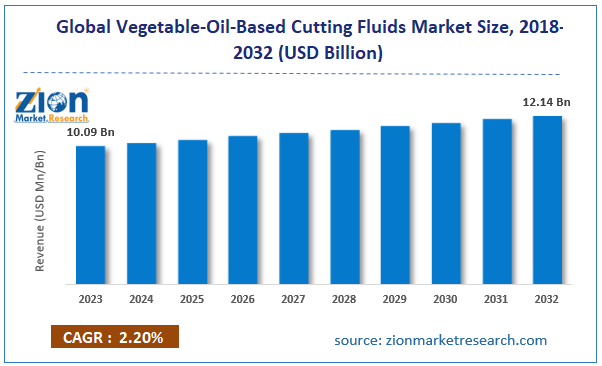The vegetable-oil-based cutting fluids market is gaining significant traction as industries shift towards more sustainable and environmentally friendly manufacturing practices. These cutting fluids, derived from natural oils, offer several advantages over traditional petroleum-based fluids, including biodegradability, lower toxicity, and enhanced lubricity. As we look forward to 2032, the market is expected to witness robust growth driven by increasing regulatory pressures, technological advancements, and a rising focus on sustainability. Here’s an in-depth analysis of the market size, share, industry trends, and growth projections:
Market Size and Growth Projections
The global vegetable-oil-based cutting fluids market is projected to expand considerably, with estimates suggesting the market size could exceed USD 12.14 billion by 2032. This growth is fueled by the rising adoption of green manufacturing practices and the superior performance characteristics of vegetable-oil-based cutting fluids.

Key Industry Trends
- Sustainability and Environmental Concerns: Increasing environmental regulations and a global push towards sustainability are driving the adoption of vegetable-oil-based cutting fluids. These fluids are biodegradable and pose less risk to workers’ health and the environment, making them a preferred choice over conventional options.
- Technological Advancements: Innovations in formulation and production techniques are enhancing the performance and stability of vegetable-oil-based cutting fluids. Advances such as the development of multi-functional additives and improved emulsion stability are contributing to their growing popularity.
- Performance Benefits: Vegetable-oil-based cutting fluids offer superior lubricity, reducing friction and wear on cutting tools. This results in longer tool life, improved surface finish, and higher machining efficiency, which are critical factors in their increasing adoption across various industries.
- Cost Competitiveness: While traditionally more expensive than petroleum-based fluids, the cost of vegetable-oil-based cutting fluids is becoming more competitive due to advancements in production technologies and economies of scale. Additionally, their longer service life and reduced disposal costs contribute to overall cost savings.
- Industrial Applications Expansion: The application scope of vegetable-oil-based cutting fluids is expanding beyond traditional machining operations to include industries such as automotive, aerospace, and medical devices, where precision and environmental impact are critical considerations.
Industry Analysis and Challenges
Despite the promising growth outlook, the vegetable-oil-based cutting fluids market faces several challenges:
- Compatibility Issues: Compatibility with existing machinery and materials can be a concern, necessitating adjustments and testing to ensure optimal performance.
- Stability and Shelf Life: Ensuring long-term stability and shelf life of vegetable-oil-based cutting fluids can be challenging, requiring continuous innovation in formulation and packaging.
- Market Penetration: While awareness is growing, the market penetration of vegetable-oil-based cutting fluids is still limited in some regions due to a lack of awareness and higher initial costs.
Future Outlook
Looking ahead to 2032, the vegetable-oil-based cutting fluids market is expected to continue its upward trajectory, driven by ongoing advancements in green chemistry, increasing regulatory support, and a growing emphasis on sustainable manufacturing. Emerging markets in Asia-Pacific, Latin America, and Africa are projected to offer significant growth opportunities, fueled by industrialization and stringent environmental regulations.
In conclusion, the vegetable-oil-based cutting fluids market is poised for substantial growth, supported by technological innovation, regulatory trends, and the global shift towards sustainable manufacturing practices. Industry stakeholders must navigate challenges while capitalizing on emerging opportunities to drive market expansion and establish a sustainable future for cutting fluid technologies.
Read Also:
https://www.linkedin.com/pulse/in-depth-analysis-backside-illuminated-bsi-cmos-image-sensor-ciqmc?
https://www.linkedin.com/pulse/die-casting-market-research-detailed-analysis-future-outlook-z03ac
https://www.linkedin.com/pulse/top-hr-outsourcing-consultancy-service-companies-streamlining-v7w8c







